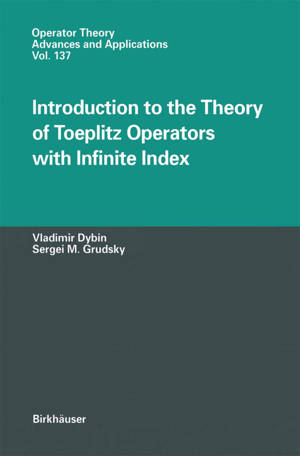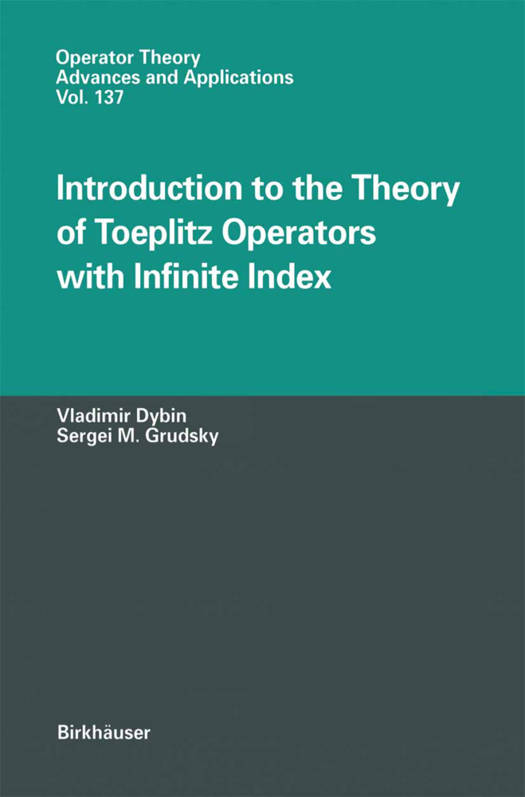
- Afhalen na 1 uur in een winkel met voorraad
- Gratis thuislevering in België vanaf € 30
- Ruim aanbod met 7 miljoen producten
- Afhalen na 1 uur in een winkel met voorraad
- Gratis thuislevering in België vanaf € 30
- Ruim aanbod met 7 miljoen producten
Zoeken
Introduction to the Theory of Toeplitz Operators with Infinite Index
Vladimir Dybin, Sergei M Grudsky
€ 105,45
+ 210 punten
Uitvoering
Omschrijving
We offer the reader of this book some specimens of "infinity" that we seized from the "mathematical jungle" and trapped within the solid cage of analysis The creation of the theory of singular integral equations in the mid 20th century is associated with the names of N.1. Muskhelishvili, F.D. Gakhov, N.P. Vekua and their numerous students and followers and is marked by the fact that it relied principally on methods of complex analysis. In the early 1960s, the development of this theory received a powerful impulse from the ideas and methods of functional analysis that were then brought into the picture. Its modern architecture is due to a constellation of brilliant mathemati- cians and the scientific collectives that they produced (S.G. Mikhlin, M.G. Krein, B.V. Khvedelidze, 1. Gohberg, LB. Simonenko, A. Devinatz, H. Widom, R.G. Dou- glas, D. Sarason, A.P. Calderon, S. Prossdorf, B. Silbermann, and others). In the ensuing period, the Fredholm theory of singular integral operators with a finite index was completed in its main aspects in wide classes of Banach and Frechet spaces.
Specificaties
Betrokkenen
- Auteur(s):
- Uitgeverij:
Inhoud
- Aantal bladzijden:
- 300
- Taal:
- Engels
- Reeks:
- Reeksnummer:
- nr. 137
Eigenschappen
- Productcode (EAN):
- 9783034894760
- Verschijningsdatum:
- 30/10/2012
- Uitvoering:
- Paperback
- Formaat:
- Trade paperback (VS)
- Afmetingen:
- 156 mm x 234 mm
- Gewicht:
- 444 g

Alleen bij Standaard Boekhandel
+ 210 punten op je klantenkaart van Standaard Boekhandel
Beoordelingen
We publiceren alleen reviews die voldoen aan de voorwaarden voor reviews. Bekijk onze voorwaarden voor reviews.











